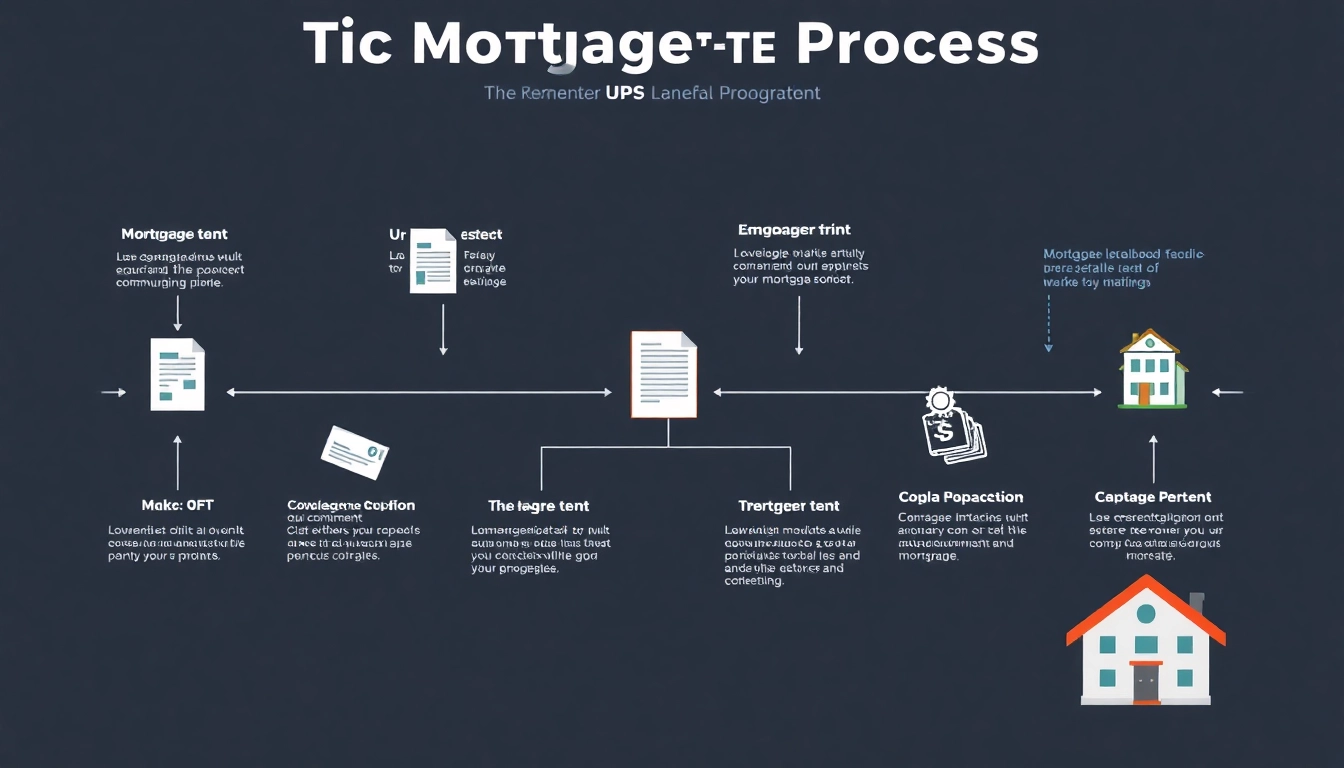Mastering the Mortgage Process for Lenders: A Comprehensive Guide

Understanding the Mortgage Process for Lenders
The mortgage process for lenders is a multifaceted system that plays a crucial role in financing home purchases. With the evolving financial landscape, understanding this process not only aids lenders in improving their services but also enhances borrower satisfaction. More importantly, navigating the intricacies of this process allows lenders to offer competitive rates and efficient services that attract and retain clients. By grasping the nuances of mortgage process for lenders, professionals can streamline operations and improve overall outcomes.
What is the Mortgage Process?
The mortgage process is a series of steps that prospective homeowners go through to secure financing for a property. For lenders, it involves assessing the applicant’s financial health, determining the loan amount, and managing the risk associated with lending. This process can vary significantly depending on the lender, the type of mortgage, and the borrower’s individual circumstances. Generally, the mortgage process encompasses various stages: pre-approval, property selection, application submission, loan processing, underwriting, and finally, closing.
Key Players in the Mortgage Process
Several key players are involved in the mortgage process, each fulfilling distinct roles:
- Borrowers: The individuals seeking loans to purchase homes.
- Lenders: Institutions or individuals providing the funds for the mortgage.
- Real Estate Agents: Professionals assisting borrowers in finding suitable properties.
- Appraisers: Experts assessing the property value for the loan.
- Underwriters: Individuals evaluating the risk of lending to borrowers and determining loan approval.
- Title Companies: Organizations ensuring clear ownership of the property and handling the closing process.
Importance of Understanding the Process
For lenders, a deep understanding of the mortgage process is imperative. It not only facilitates smoother transactions but can also lead to better financial outcomes. By comprehending the detailed steps and potential hurdles of the process, lenders can enhance collaboration among all parties, reduce application times, and ultimately deliver excellent customer service. Additionally, streamlined operations can reduce costs and improve profitability for lenders.
Stages of the Mortgage Process
Pre-Approval: The First Step
The pre-approval stage marks the beginning of the mortgage journey. During this phase, lenders assess a borrower’s financial information to estimate how much they can borrow. Key considerations include credit score, income, debts, and employment history. By providing borrowers with a clear understanding of their potential budget, lenders can help them shop for homes within a realistic price range.
Application Submission Guidelines
Once a borrower finds a property they wish to buy, they will submit a mortgage application. This application includes detailed information about their finances, the property, and their proposed loan amount. Lenders must ensure that their application process is straightforward and that their requirements are clearly communicated to avoid any frustration for the borrower. It is crucial for lenders to gather the necessary documents, which commonly include:
- Proof of income (e.g., pay stubs, tax returns)
- Credit history
- Debt obligations
- Asset documentation (e.g., bank statements)
- Information about the property being purchased
Processing and Underwriting
The processing stage involves verifying the information provided in the application. Lenders analyze the borrower’s financial history and assess the property’s value through appraisals. The underwriting process is critical, as underwriters evaluate the risk of lending to the borrower based on various factors, including creditworthiness and income stability. Lenders must maintain effective communication with borrowers during this phase to mitigate anxieties about the approval process.
Challenges Lenders Face in the Mortgage Process
Document Verification Issues
One common challenge faced by lenders is document verification. Incomplete or inaccurate information can lead to significant delays in the loan approval process. To efficiently manage this, lenders can implement robust document management systems that facilitate faster verification and validation of applicant data. Training staff to recognize issues and address them promptly can enhance overall operational efficiency.
Time Delays and Their Impact
Time delays in the mortgage process can adversely affect both the borrower and the lender. Extended closing times can lead to lost deals for real estate agents and dissatisfied customers. Lenders must adopt measures to streamline the process, such as improved coordination among all parties involved and clearer communication of timelines to borrowers. Regularly updating clients on their application status can also help alleviate concerns.
Mitigating Risk in Mortgage Approvals
Risk management is a core component of the mortgage process. Lenders must balance the desire to lend money with the potential risks involving borrower defaults. The implementation of strict underwriting guidelines, coupled with thorough risk assessment tools, allows lenders to maintain a healthy loan portfolio. Furthermore, employing predictive analytics can help identify high-risk borrowers early in the process, enabling lenders to take preventive measures.
Best Practices for Lenders
Streamlining Communication with Borrowers
Effective communication is pivotal during the mortgage process. Lenders should create a dynamic communication strategy, where borrowers receive timely updates about their application status, required documentation, and expected timelines. Utilizing multiple communication channels, such as phone, email, and SMS, can enhance accessibility and responsiveness.
Utilizing Technology in Mortgage Processing
Incorporating technology into the mortgage process can significantly improve efficiency. Automated systems for document collection, processing, and underwriting can speed up the time required for loan approvals. Platforms that facilitate electronic signatures and online document submissions can also streamline workflows, thereby enhancing the overall borrower experience.
Continuous Education on Industry Changes
Given the dynamic nature of the mortgage industry, lenders must invest in continuous education and training. Keeping abreast of changing regulations, market conditions, and best practices is crucial for lenders to remain competitive. Regular training sessions and workshops can ensure that your team stays informed about the latest developments in the mortgage process.
Future Trends in the Mortgage Process for Lenders
Embracing Digital Solutions
The future of mortgage lending is increasingly leaning towards digital solutions. With the rise of fintech companies and digital-only lenders, traditional lenders must integrate technology to refine their processes and improve customer interactions. The growing popularity of mobile applications for mortgage management promises to enhance the borrower experience and make obtaining a mortgage more convenient than ever.
Sustainability in Lending Practices
As environmental concerns gain traction, lenders are beginning to embrace sustainable practices. This includes assessing the environmental impact of properties or offering incentives for energy-efficient homes. By incorporating sustainability into lending practices, lenders can appeal to a growing demographic of eco-conscious borrowers and establish a more responsible lending framework.
Preparing for Regulatory Changes
Regulatory changes are an inevitable aspect of the mortgage industry. Lenders must remain vigilant and flexible to adapt quickly to any changes in lending policies or compliance requirements. Establishing a proactive approach toward policy updates and ensuring staff are adequately trained will help maintain compliance and safeguard the lender’s reputation.







